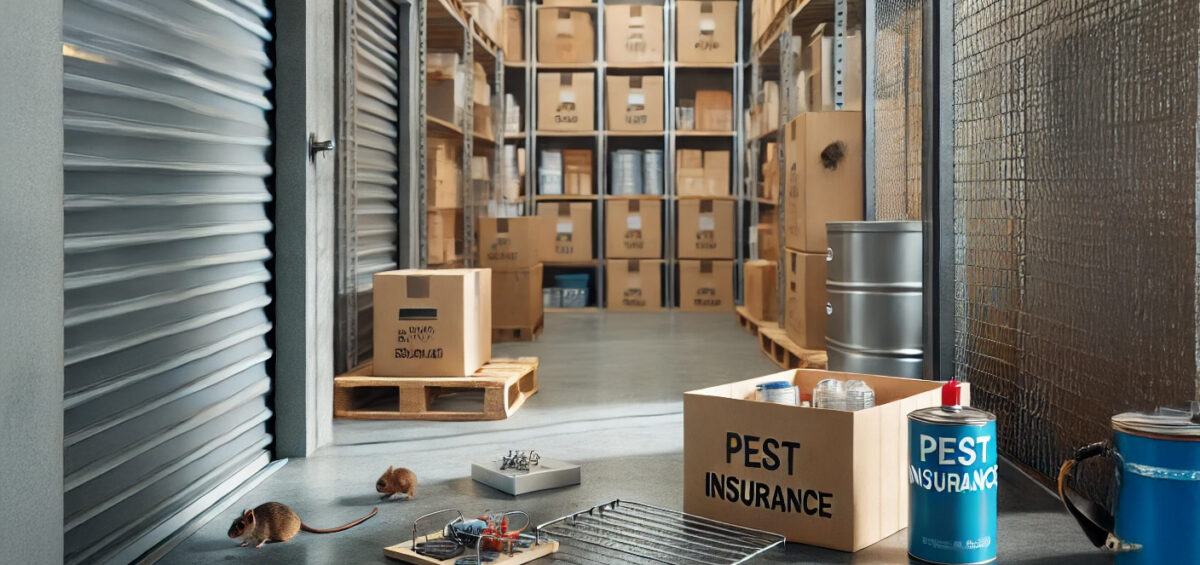Storage units provide a convenient solution for storing belongings, but they can also pose risks, such as pest infestations. Understanding pest infestation insurance for storage units is crucial for protecting your stored items from potential damage. This guide explores what this insurance covers, why it’s important, and how to ensure adequate coverage.
What is Pest Infestation Insurance for Storage Units?
Pest infestation insurance for storage units is a type of coverage designed to protect stored belongings from damage caused by pests such as rodents, insects, or mold. While standard storage unit rental agreements typically do not include coverage for pest-related damage, this specialized insurance fills that gap.
Importance of Pest Coverage
Imagine storing furniture, clothing, or documents only to find them damaged by pests upon retrieval. Storage unit insurance coverage that includes pest protection ensures that you are financially safeguarded against such losses. It provides peace of mind knowing that even if pests infiltrate your unit, your belongings are covered.
What Does Pest Infestation Insurance Cover?
Pest infestation insurance for storage units typically covers:
- Damage from rodents and insects: This includes damage caused by pests chewing through items, nesting in them, or leaving droppings that can ruin fabrics and materials.
- Mold and mildew: These can develop in damp conditions within the storage unit, potentially damaging furniture, clothing, and electronics.
- Loss of property: In cases where pest damage is severe, leading to the loss of entire items, the insurance may reimburse you for the value of the lost property.
Exclusions to Consider
While pest infestation insurance covers a wide range of damages, it’s important to understand common exclusions:
- Pre-existing conditions: Damage that existed before the insurance policy was purchased may not be covered.
- Natural disasters: Some policies may not cover pest damage resulting from floods, earthquakes, or other natural disasters.
- Negligence: If the storage unit renter fails to take reasonable precautions to prevent pest infestations (such as proper sealing of food items), insurance claims may be denied.
Choosing the Right Coverage
When selecting storage unit insurance coverage with pest protection, consider the following:
- Coverage limits: Ensure the policy covers the total value of your stored belongings.
- Deductibles: Understand the deductible amount you’ll need to pay out of pocket before insurance coverage kicks in.
- Policy specifics: Read the fine print to understand exactly what is covered and any specific conditions or exclusions.
Steps to Prevent Pest Infestations
While insurance provides financial protection, preventing pests in the first place is key:
- Inspect and clean: Regularly inspect stored items for signs of pests and clean the unit to eliminate attractants like food crumbs.
- Use sealed containers: Store items in sealed plastic containers to prevent pests from accessing them.
- Maintain ventilation: Ensure proper ventilation to reduce humidity and prevent mold growth.
- Professional pest control: Consider hiring a pest control service to treat the unit periodically.
Safeguarding Your Stored Treasures with Snapnsure!
Why choose Pest Infestation Insurance for Storage Units from Snapnsure? Our policy protects your stored belongings against pests like rodents and insects. It also ensures peace of mind by reimbursing for damages caused by pest infestations, including mold and mildew. Don’t risk unexpected costs—secure your items with Snapnsure’s reliable insurance tailored for storage unit renters. Ready to safeguard your valuables? Get a quote today!



Leave a Comment